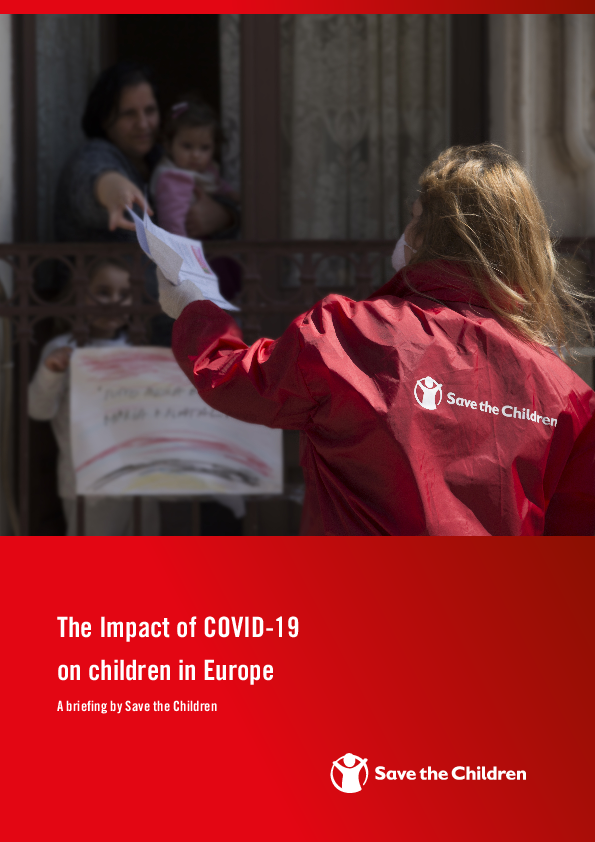
Reports
The Impact of COVID-19 on Children in Europe
Publication year:
2020
English
Format:
pdf (14.1 MiB)
Publisher:
Save the Children Europe
Child poverty in Europe was already unacceptably high before the COVID-19 virus outbreak. In 2018, one in four children in the European Union (EU) were already growing up at risk of poverty or social exclusion. The crisis has had devastating consequences for people across the continent and the evidence from this paper shows that children and their families have been further disadvantaged during the pandemic.
The financial pressure on families, the impact of the closure of services on children’s lives, the online education inequality and the impact of the crisis on refugee and migrant children are among the key issues confronted by families and children across the continent.
Today, marks the first week of the German Presidency of the Council of the European Union. Save the Children members and country offices in pre-accession countries[1] call on the German Presidency, the European Commission, the European Parliament and the EU Member States to prioritise child poverty reduction across EU funding and policies in the coming months as part of the response to the pandemic.
The European Commission’s proposal to allocate 5% of the European Social Fund Plus (ESF+) resources to child poverty reduction must be adopted in the negotiations of the 2021-2027 Multiannual Financial Framework and the Recovery Plan. The Instrument for Pre-Accession Assistance III (IPA III) should also allocate funding to support those in most vulnerable situations.
In addition, the upcoming Child Guarantee Council Recommendation should be adopted as soon as possible in order to support EU Member States to tackle child poverty within the EU.
National governments must also act to fulfil their obligation under the United Nations Convention on the Rights of the Child and to ensure that children’s rights are protected throughout the pandemic and its aftermath.
This paper is divided into two parts: The first details the evidence from the ground, painting the picture of life for children during the pandemic in different European countries with statistics and examples, and giving a set of recommendations on measures that national governments across Europe can take to help protect children from the worst impacts of the crisis relating to the economic impacts on families, loss of services, access to education and targeted measures for children in migration. The second part focuses on recommendations to the EU institutions on how EU policy and funding can support and complement these national-level actions in these challenging times.
[1] Sweden, Finland, Norway, Romania, the Netherlands, Spain, Italy, Germany, Iceland, Albania, Kosovo, and the North West Balkans (Serbia, Montenegro, and Bosnia and Herzegovina).
Read full abstract
View & Download
English
1 Documents
Document information
Publisher
Format
Content type
Country
Region
Rights
© Author/Publisher
Found a mistake? Help us improve!
If you have noticed a document assigned to the wrong author or any other inaccuracies, let us know! Your feedback helps us keep our data accurate and useful for everyone.
Share
Link
